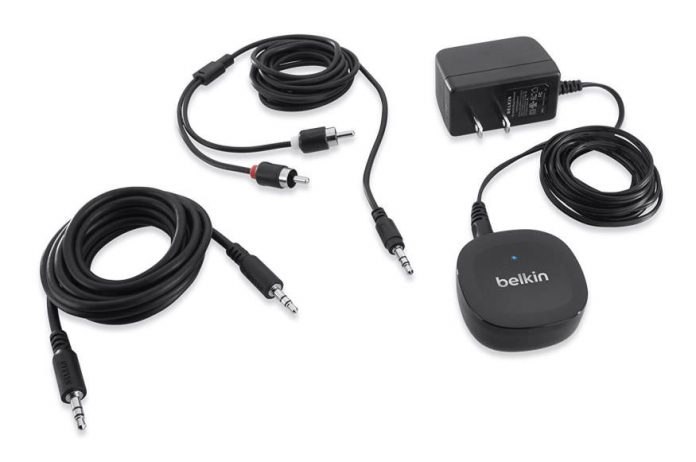Technologies play a crucial role in ensuring an organization achieves its set goals. The dynamic nature of today’s world has led to new technologies in different sectors of operation, especially in manufacturing firms. New sales technology can increase productivity, accelerate deals, and boost revenue. Consumers’ needs are unlimited, and the population grows every day, so to curb this, managers need to review new technologies to enhance their performance continually. New technologies need to be implemented to match consumers’ demands. Often, this type of change makes employees uncomfortable because it disrupts their routine or it’s unfamiliar. Managers can minimize this challenge by explaining to employees the company’s goals and the opportunities in the new technology that is going to help an organization to achieve its future goals. The big question is, are employees willing to welcome that new technology? The following tips can help managers to lay substantial grounds for the successful adoption of new technologies.
Tip 1: Align benefits of technology to strategies by the executive sponsor
Before a new technology is introduced, the executive sponsor (organization topmost manager) should set the stage by explaining to the employees the vision and mission of the organization, current status, and the need to find a new way of doing things in an attempt to achieve future goals. The talk should be more focused on involve analyzing the current production against the set targets highlighting the challenges posed by the old way of doing things. Then the executive sponsor needs to explain how the unmet gap can be sealed using new technology to meet the future set targets. This will exclusively entail the benefits of the proposed new technology to the organization and the employees. Above all, the executive sponsor in his talk should ensure that employees can see their value in the company, which will motivate them to work hard. This way, the implementation team will have an easy time avoiding uphill battle against the new technologies and help them achieve goals faster.
Communication should be done to all departments to ensure everyone in the organization is working in unison towards the same goals. Visual support and leadership, by example, is always crucial as key leaders should be the first adopters of the new technology for the employees to get encouraged that it is possible.
Tip 2: Break up the technology Into Small Steps and keenly explain how each step works
Not every employee will get the meaning and importance of adopting new technology by just high lighting its benefit, so, as a manager, you need to ensure you have all employees at par. As a result of this, then the manager needs to explain in detail and, if possible, demonstrate to his/her employees how the new technology works and why it is what they need at the moment. In other words, explain to employees what is in that new technology that makes it better than what they are using currently and how that unique aspect will make it easier to achieve future targets faster for example how the new technology will make them more productive and at the same time reducing workload.
The implementing team should be well conversant with the new technology and even be able to provide cases where it has worked well and provided statistics for the users to see its benefits. Excellent mastery of the technology will make you sound serious in front of the users.
Tip 3: Develop sufficient and customized training
These new technologies, at times, are borrowed or purchased from somewhere, and training manuals usually accompany them. Before you start training your employees always ensure that the training is specific to the technology, and it should capture all the required aspects for the users. The training should consider multiple methods such as videos, electronics, demonstrations, going live, and even visiting labs/companies where the technology is already in place to ensure users feel most prepared. As you deliver training to your team, ensure you contextualize the new technology and highlight how it’s going to bridge the gap that is currently existing to achieve the company’s set long term targets. To increase adoption, the training should be specific to each stakeholder group and should handle what they are required of as far as the new technology, and the company goals are concerned. Training should not be too dull for employees to feel like they are wasting time.
For a smooth transition, training is a must, and therefore before launch a new technology, thorough training is done to the users. People learn differently, so your training strategy should cater to visual learners, auditory learners, kinesthetic learners, as well as tactile learners. In other words, your training should both be theoretical and practical to account for all users of the technology.
Tip 4: Cultivate champions
As stated, you need to communicate buy-in and engagement by getting a network of champions onboard, this network of champions needs to include some top-performing staff(early adopters) who you will use to help you convey a positive message about the technology and help convince reluctant coworkers to adopt the new technology. With these champions will you will be able to promote transparency around a factor that will attract more people within the organization as their support is vital. These champions should have a good grasp of the new technology, its advantages, and intended outcomes so that they can vocalize and demonstrate their support. Champions’ suggestions, concerns as well as the feedback they get from the audience regarding the new technology should be accommodated, and necessary adjustments are made early enough before rolling out the new technology.
Tip 5: Start small, learn, and then scale.
After employees have been trained, the implementation team can decide to start rolling out the technology. Since all employees may not be the first learners, simple basics should be introduced first. The implementing team should be keen and ensure they walk together, and in case of any challenge, they should fix it immediately as a team. Ensure that all users understand the key basics before you move on to more detailed and complicated aspects of the technology. This step-wise rollout will provide room expansion as wrinkles have already been ironed out. The next step is to encourage continuous learning opportunities amongst users. We assume that these users do not have enough skills concerning the technology, so continuous learning should be encouraged even after the initial training before launching the technology for them to gain comfort with the new way of doing things. This includes things like organizing workshops, seminars, and bench making in companies using the same new technology to change the environment. If the organization cannot manage to host employees outside the organization, then leaders can host “lunch and learn seasons” to build some connections amongst the team members hence providing an opportunity to learn more about the new technology.
Tip 6: Be patient
It is common for some leaders to be impatient with underperformance, but they need to remember the thumb rule that, with adequate training and unlimited coaching, it takes 21 days to change a behavior when people are provided with positive reinforcement. Adapting to change is a complete transition, and it takes time; therefore, it is not a problem when some of the team members are slow. Since users were not the author of the new technology, they need some time for them to absorb and be comfortable with the new technology. Plus, building new technology into the routines and rhythms of the workday is not a quick process.
Tip 7: Monitor through feedback and course correct
Feedback from the champions might leave out some essential aspects which need serious attention before or after the implementation of the new technology, so by having different feedback mechanisms, I do believe that much will be harvested through this strategy. Once the new technology has been rolled out, constant feedback from the users is very crucial, and through this feedback, the manager will be able to assess if the new technology will serve its purposed need. This feedback can be collected through an email account for complaints and concerns, suggestion boxes, and even at the company’s help desk or technical support office.
Introducing new technology disrupts the normal workflow in an organization, so the implementing team needs to monitor the deployment continually and consider possible revisions to the implementation schedule if there is any. Ensure the feedback you have received are all considered because the new technology is impacting on all stakeholders, so every opinion counts. As part of the monitoring strategy, set short term targets with the team and ensure they meet them before the set period to show how the technology is efficient and its impact in their day to day work. From there, increase the target until it reaches its full capacity. Performance appraisal should be done, and the best performers are rewarded to motivate the other users. If you realize they all need motivation then you can set a target and introduce incentives for each.
Tip 8: Measure and optimize.
Once the implementation has been done, don’t stop, go ahead and develop measurable success factors and performance metrics to realize what is right and what needs to be adjusted. Don’t let the technology be failed by what could have been corrected. Get solutions to those problems in any. If you can’t provide the answer, consult where you purchased the technology for. Always compute ROI and use those findings to better the technology.



















